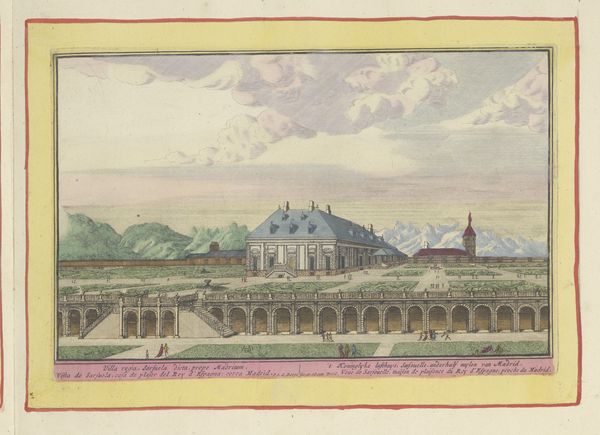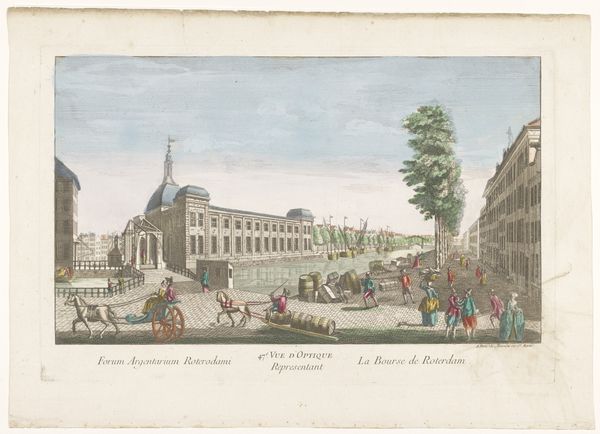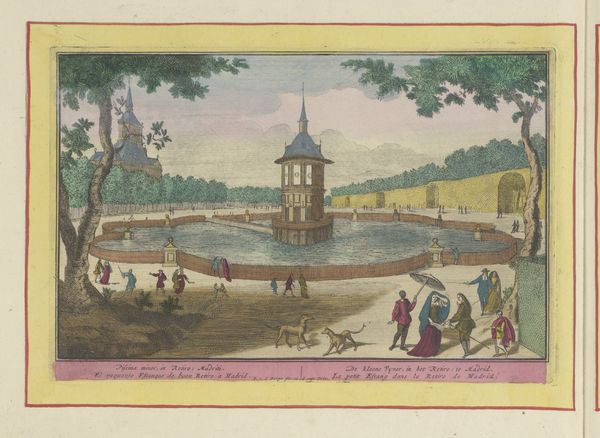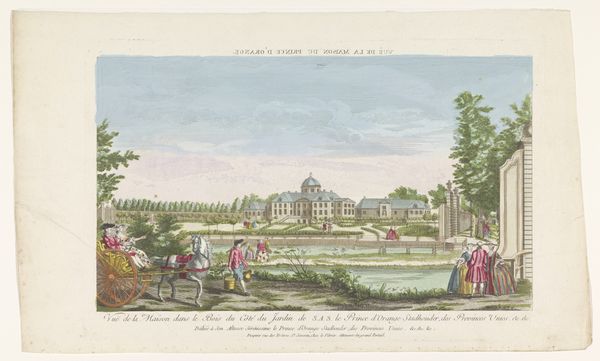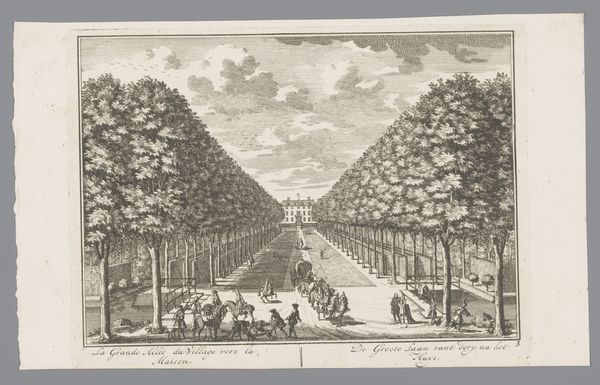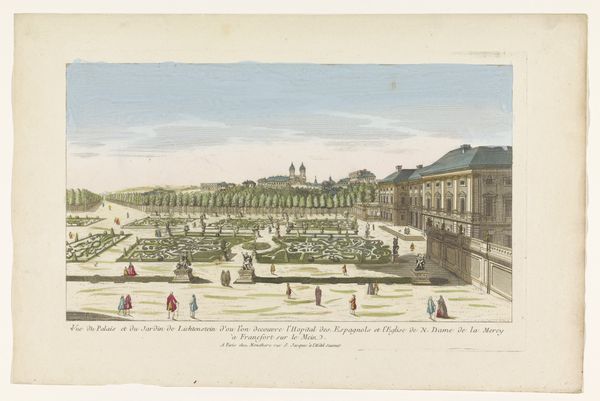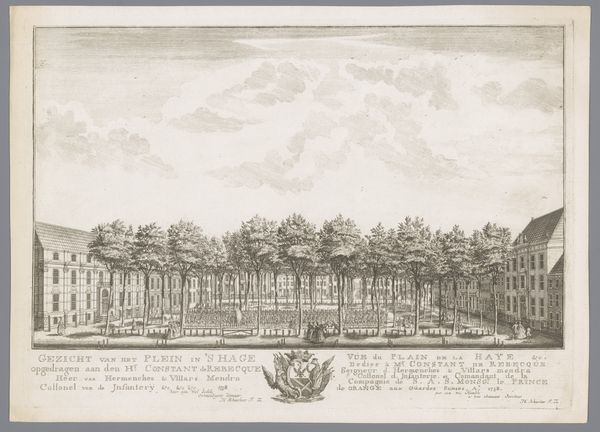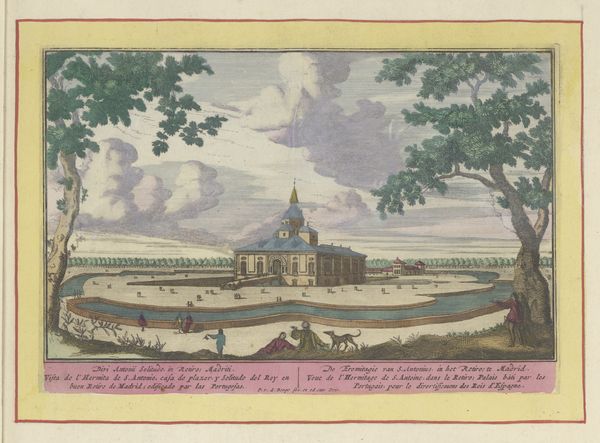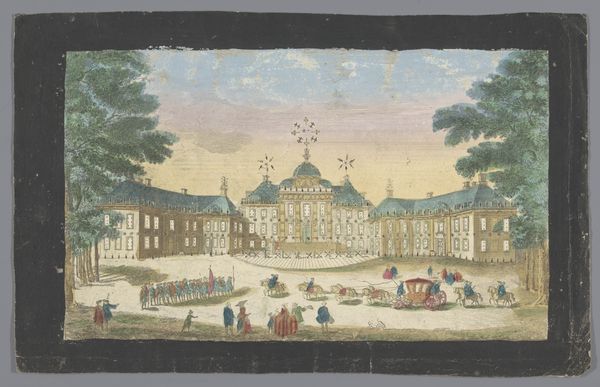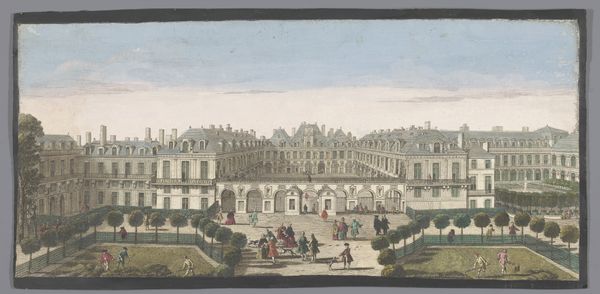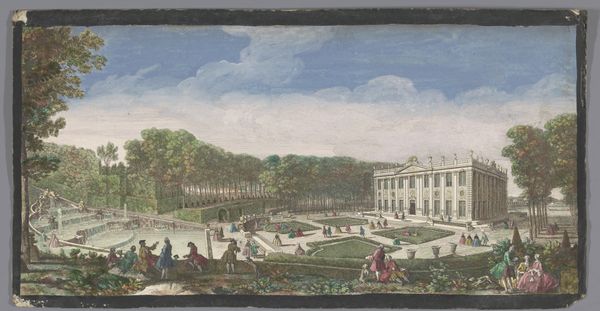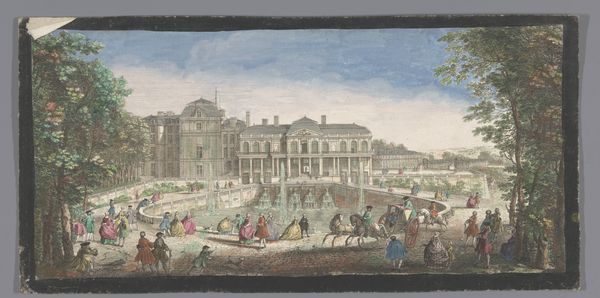
drawing, coloured-pencil, print, engraving
#
drawing
#
coloured-pencil
#
baroque
# print
#
landscape
#
coloured pencil
#
cityscape
#
engraving
#
watercolor
Dimensions: height 172 mm, width 257 mm
Copyright: Rijks Museum: Open Domain
Curator: Here we see Pieter van den Berge's "Koninklijk Paleis van Aranjuez," created between 1694 and 1737, a drawing that employs both colored pencil and engraving. It's now held in the Rijksmuseum. Editor: It has an incredible serenity to it, almost unreal. The colors are soft, almost pastel, and the composition, with the grand building offset by those rows of trees, creates this sense of a stage. It feels very deliberately constructed. Curator: Precisely. Observe how the receding lines of trees—each perfectly placed—and the strong horizontal emphasis of the palace contribute to a deeply controlled perspective. Note also how the architectural detail is rendered with incredible precision for a work combining engraving with what appears to be watercolor. Editor: The perspective, of course, speaks volumes about power. We, the viewers, are positioned to admire this grand palace, this symbol of royal authority. The carriages and figures become miniature within this perfectly ordered space. One has to wonder if that figure bowing is symbolic. The Palace is shown as a place for not just Royalty but perhaps those allowed to get close to the King or Queen. Curator: Good eye. He becomes a marker for scale, reinforcing the overwhelming monumentality of the palace and garden complex. The balustrade and its repeating forms operate in the same way, leading our eye towards the palace. Consider the formal qualities in the symmetry and calculated geometry inherent to Baroque sensibilities. The even distribution of color and shading produces visual harmony. Editor: Baroque, absolutely, yet it evokes older symbols of divine right. Palaces often acted as stages to convey a ruler's prestige and connections. The architecture itself borrows heavily from established symbolism, presenting both real-world power, and perceived otherworldly blessings. All this could suggest that this piece reflects the social and political climate, showing a specific vision of royal power. Curator: A persuasive reading! For me, the work's strength lies in its refined application of line, color, and form to construct a scene rooted firmly within established artistic and architectural theory of the time. Editor: And for me, in its complex layering of symbolism and its function as a visual document encoding power dynamics for generations to come.
Comments
No comments
Be the first to comment and join the conversation on the ultimate creative platform.
